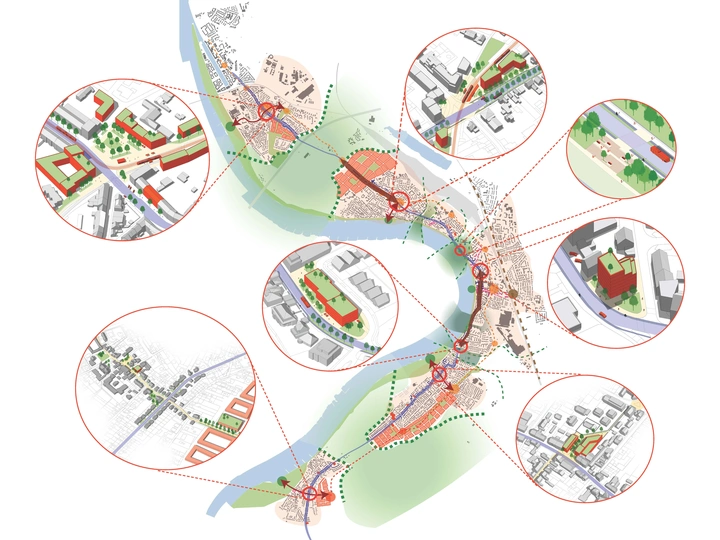Wanderlush Thoroughfare Cologne

Parallel to my work at a small architecture office for residential buildings in Munich, Germany, I like to investigate spatial production within different contexts and scales through my own side projects in the fields of art and urban design. My main focus lies in exploring ways to improve our built and unbuilt environment to make it healthier, more resilient and enjoyable. I am interested in future ways of living, working and playing and their possible spatial expressions, realistic or hyperbolic, especially considering current political, economic and environmental challenges.
During the Covid-19 restrictions many of the inner-city car parking spaces in front of restaurants within the City Centre of Munich were used as outdoor seating spaces and contributed greatly to the liveliness and overall flair of the street. Here you could see directly, what benefit the reduction of car parking, and therefore maybe implied, usage could bring.
Compared to historic city centers, where, due to its dense urban fabric and public infrastructure, such permanent interventions are successful, many outer districts were developed with and are reliant on personal vehicular traffic as their main way of mobility. In these areas wide streets, large parking lots and low-density housing is common.
The “Wanderlush Thoroughfare” envisions a scenario, which, through different interventions along and around the southern main traffic artery to Cologne city Centre, encourages non-motorized traffic, by creating a more pedestrian friendly environment and new linkages between alternative mobility options.
Through the implementation of mobility hubs at important traffic junctions and locality entrances, both street width and car parking along the main street can be reduced. The freed-up space can then be used for social, green/blue infrastructure and well designed public space, adding a representational function to an important city axis.
Initially developed as an entry for the yearly Schlaun Competition 2024 (Cologne City Axis) I decided to use “Wanderlush Thoroughfare” to develop a way of integrating architecture and landscape design with mobility and climate considerations on a larger, city district scale.